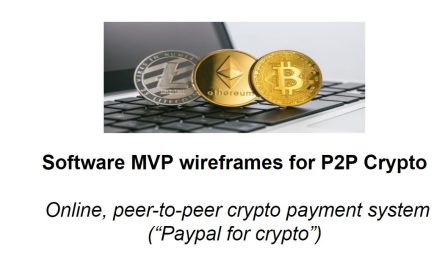What separates your favourite book from your last blog post? Why is the interaction with your favourite clothing store a lifestyle activity while an insurance salesperson is just that, an annoying salesperson. The difference is subtle and decisive – your purpose.
The reason why Neil Gaiman is a great author is not that he knows how to arrange words slightly better than that other cool writer, what’s her name? No, it’s because he feels it. Sounds a little hipstery – it is, granted – and it’s also true. Listen to him for a couple of sentences and you’ll understand. The reason why Donald Trump gets such tremendous reactions is because he does – whatever that is – what he does full-heartedly. And not every message is looking for a positive feedback. It is getting feedback that ultimately counts (or makes you president). Most importantly, getting the feedback you are looking for. That’s what it takes to become a protagonist… or an antagonist.
So, let’s throw the word in quickly. Passion. That’s what we like to call it. If you are truly invested in the idea, bla bla. It seems to me that it is slightly more complex than that. Let me elaborate on this in three blocks – being in line with your interests, finding the ingredients and consistency.
Being in Line with Your Interests
We transfer emotions, whether we like it or not. We project ourselves into others, overcompensate for our fears and insecurities externally, and so on. I don’t think this is new to you. If it was a sort of huh-moment, you can follow that up here. Anyway, that is how we are built, right? We interact and our emotions blow life into these interactions. If you think about it, emotions interact as much interpersonally as our mimic and language do.
It gets slightly trickier when a machine is used as an intermediary. Like now. You don’t see what I saw when I wrote this (although the interface is similar), you don’t feel what I feel (are you hungry and knackered? Maybe we do feel alike ;). But you project your emotional state on to the text that you’re reading. Part of what makes you think this is divine/coconuts/good/mediocre/bad/terrible/insulting derives from your state of mind and your perceived relationship with me and the topic. The other part is my doing. That’s the part I can influence.
This is really where the title comes into play. Being in line with your greatest sources of energy is the only way to set up your text in such a way that maximises the chance of a favourable outcome (= input x reader’s perception). Whether you call that being passionate about your content or writing about something that actually interests you is beside the point. For me personally, the writing itself is appealing. If that is not true for you, maybe blogging should be second to audio or visual content? OR you try to find the writer within. Check this out if you’re unhappy about your current writing. To be honest, it bored me after a while but I think it’s potentially really helpful to find your writing style. In any case, do what feels natural. Forcing it won’t lead nowhere (or to a double negative at best).
Hopefully, this section bores you by now. That’s a sign that you are already doing what you want to be doing. If not, it’s time to leave here and start looking. In case you were thinking an 85-minute video explaining Writing for Emotional Impact with Karl Iglesias, have fun. Seriously though, it’s worth a peek.
Now, I didn’t write this post just to tell you that you should do something you want to be doing the way that you want to be doing it, although that has to be said every once in a while for cognitive limitation reasons. This is the core ingredient, the footing for your blog. Once you have this, you start building.
Finding the Ingredients
Imagine your passion as the gold inside you for a moment. Now, unimagine that. How do we produce gold? We mine it! So, if we have to mine actual gold, maybe the same is true for the best inside us.
A great way to mine our talent is to put a suitable structure around it. Jeff Goins, who barely justifies a wikipedia page, provides a fast track to do this. He calls it Four Essential Elements to Writing a Great Blog Post (an attention-grabing headline, a captivating lead paragraph, interesting supporting points and a compelling call-to-action). Beware this is a lose structure and you should be certain your gold is shiny if you fast-track writing proper content.
In my opinion, there is a cleaner way of doing this. I found this article on writing your best possible blog post (ironically with a terribly long title). This is a long and tedious road to take and it may well be worth it if you’re planning on staying around for the long run. After all, the best did have to stop at some point to become good at what they’re doing. There isn’t much else I can think of adding here, their post is extensive. Please make sure you stop a moment to think about what they call how to create visual content to keep readers interested. This is crucial! If the eye doesn’t like your post, the perceived interaction with it will be negatively affected.
Now, I’m no expert on visuals and I don’t have to be because Thomas Bliss is! Stay tuned because he, too, is inside the blogger. One thing up front. Most people cannot create all visuals themselves or choose not to. Before you use other people’s property, just make sure you ask yourself: can I use this image?
Consistency
I sincerely believe that long-term alignment is a prerequisite for doing any significant task properly. What that means is that you don’t need a solid structure once but for every single post. That’s why it’s worth putting in the effort at the beginning. I found this article on Writing that Great Blog Post Every Time. I wouldn’t call it a masterpiece and it’s still useful. It opens the perspective to the long-term alignment I just mentioned five sentences ago. It’s the fine tuning that makes all the difference. It’s subtle and decisive – your aligned content is what transfers the emotions you put in to your reader.
If you can pull this off, amazing things become reality.
Source header image: https://www.sentis.com.au/emotion-workplace-safety/




Hey Luca, thanks for another very useful post. Reading it through gave me some food for thought on how to write my posts better!
You write in the first paragraph about passion and I think about being charismatic. I guess some people already have that intrinsically (Donald Trump and Barack Obama’s only thing in common), but I guess until some degree it can be trained (how to be charismatic in person and in writing). Maybe you could write something more about it in the future?
Thank you so much for the valuable feedback. I think I may actually write that post. Maybe it will not be the next one but I’ll keep you posted.
‘I didn’t have a career. I just did the next thing on the list.’
I just love how Neil Gaiman makes everything sound so natural and abundant and just following his ‘flow’. I think everyone should watch this video. Although it may seem like another-ordinary-graduation-speech, but from his very first sentences it just makes sense. For any topic. And for everyone. Thank you Luca!
It’s not another ordinary gruadation speech, it’s a gaimanized speech. I totally agree on the ‘flow’ thing. His words just come out differently. I appreciate the comment and keep the knitting up!